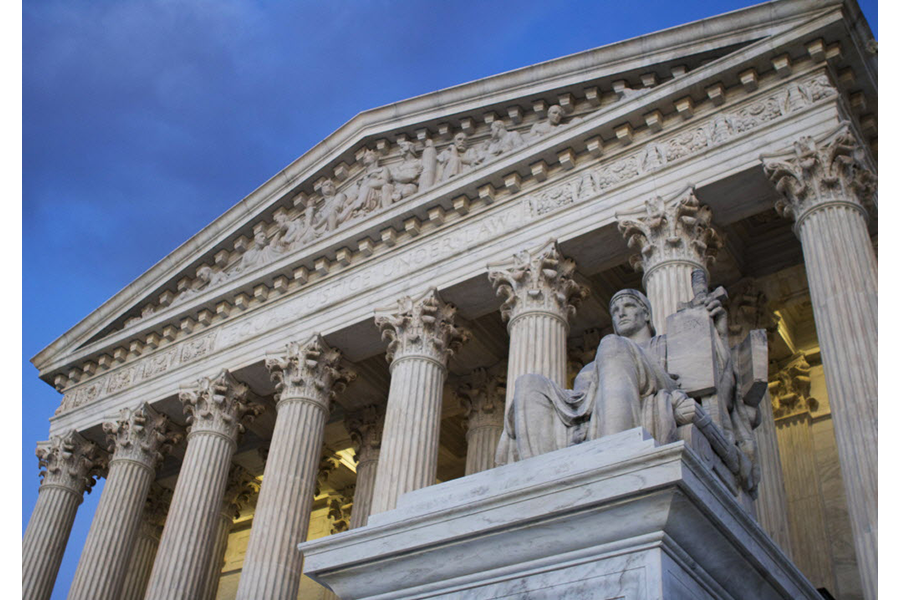What can be done to address racial gerrymandering?
The Supreme Court announced Monday it would be hearing a case to determine if Virginian politicians gerrymandered state legislative districts to disproportionately limit the power of African American voters.
This isn’t the first time the Supreme Court has tackled the issue of racial gerrymandering: Last year, the court sent an Alabama case back to a lower court to determine if the Republican-led legislature limited the power of African-American voters by stacking them heavily in certain districts. Also, in February, a federal court in North Carolina ruled that race was unjustly used by state legislators as the main factor in determining congressional districts.
This time the Supreme Court will be considering a lower court’s rejection of a challenge that accused Republican leaders in Virginia of reducing the influence of minority voters by packing them into 12 House of Delegates districts, The Washington Post reported. The case will go to the court when it starts a new session in October.
Racial gerrymandering has a long history in the United States. Prior to the passing of the Voting Rights Act in 1965, the practice was often used to split up minority communities to make it harder for them to elect the representatives of their choice, Brian Cannon, the executive director of OneVirginia2021, a nonprofit group urging nonpartisan redistricting, tells The Christian Science Monitor.
The Voting Rights Act was designed, in part, to keep minority communities together so they would have the opportunity to elect candidates of their choice. Cannon says this traditionally meant "fifty percent plus one" of a district's population would be members of the minority community, but the legislature in Virginia set a higher threshold, requiring that 55 percent of the voting age population be minorities in minority districts. Cannon says that today, when party affiliation is more important to many voters than race, the 55 percent threshold is outdated.
Cannon says that today partisanship is the main motivation for the gerrymandering.
“They’re using race as a proxy for partisanship,” Cannon says. “They’re just doing this to further the incumbent protection racket that is racial and political gerrymandering.”
Virginia's redistricting plan – the plan to be considered by the Supreme Court – passed with bipartisan support in 2011, in an 86 to 8 vote in the House of Delegates and a 22 to 18 vote in the state Senate. Many members of the state’s black caucus spoke out in favor of the bill, the Post reported.
But some political observers charge the Virginia legislature with using the 2011 plan to practice partisan gerrymandering. According to Cannon, the parties agreed to let the Republican-controlled House of Delegates redraw districts in their favor, in exchange for the Democrats being allowed to redraw the districts in the Senate, which they narrowly control. In 2015, all 122 incumbents who sought re-election to the state legislature got reelected.
Racial gerrymandering in service of partisanship has actually been increasing, Cannon says, as new technology, such as computer systems, can now offer fairly sophisticated racial population data. And by packing minorities heavily into relatively few districts, overall minority representation in government can be hurt.
Kareem Crayton, an expert on redistricting and a managing partner of CrimCard Consulting services, tells the Monitor that racial gerrymandering remains a politically viable strategy as “the Supreme Court has not done very much to regulate political parties from pursuing self-interested ends.”
Cannon tells the Monitor that the first step to address racial gerrymandering is to make political gerrymandering illegal. Another option is to make independent commissions responsible for drawing districts, as California and Arizona have done.
The court ruled in June 2015 that the US Constitution does not give state legislatures exclusive control over redistricting, and voters have the right to redirect the redistricting role to independent commissions by ballot initiatives, the Post reported.
Allowing independent commissions to draw districts can be a step in the right direction, Crayton says, and citizens can push their state legislatures and state courts to incorporate district drawing rules into state law. However, the Supreme Court can also have an impact in the upcoming case.
“The court can actually decide it means what it says when it says a legislature can’t make race the predominant motive in drawing districts,” he said. “That’s what they said in the 1990s, it should be true in 2016, whether it’s a Democrat or Republican drawing the districts.”






